| Umělec magazine 2011/1 >> Riga: Life is Life | List of all editions. | ||||||||||||
|
|||||||||||||
Riga: Life is LifeUmělec magazine 2011/101.01.2011 Alena Boika | in transition | en cs de |
|||||||||||||
|
Even when they were a part of the Soviet Union, the Baltic States were always a special region, a piece of the West in the East, with a strong scent and sheen of capitalism, though quite reserved due to the conditions of Soviet life. What did the Soviet people know about these republics at the time? Both then and now, people were almost pathologically incapable of distinguishing the three – Lithuania, Latvia, Estonia – vaguely remembering their capitals, but always mixing up other cities and personalities. What made Latvia unique? Certain indivisible phrases, like the “Gulf of Riga” with its cold clear sunshine, sand dunes, long shadows and pine trees, praised repeatedly in song; “Riga Balsam” (a famous liqueur); or the “Jurmala Festival” of pop music (1986-93). The three Baltic countries were the first to declare their independence after the collapse of the Soviet Union, and the first and so far the only countries admitted to, or rather swallowed up by, the European Union.
When I learned that Ivars Gravlejs and Petra Pětiletá decided to leave for Riga, I felt a bit sad – there are crowds of people in Prague, and rainbows too, but there are very few “rainbow people” in Prague. So I asked Petra: “How are you going to live there, in that faraway country, where people speak a slow and melodious language and where there is more sky than land?” And Petra said: “I am really looking forward to it, cítím tam takový neskutečný klid (I feel such an extraordinary serenity there) that I really want to go there as soon as possible and to immerse myself in contemplative living in a new world.” But when that contemplation actually came, it was so strong and so deep that it sometimes verged on apathy and depression. Everything around contributed to this condition. People did not talk much and smiled only rarely. Some people’s “jobs” consisted of packing up a crowbar and coming in from the countryside. Daylight robbery was a common occurrence – not right in the city center, of course, but somewhere just around the corner. It was better not go out with a camera, not to use a good cell phone, and not to make any unintelligible gestures, gaze around, or tell anyone your address. Still, not even all these measures could protect you. Once, Petra, Ivars, and a Czech friend arrived at quite a decent bar, and all it took was to speak a foreign language in order for something strange to happen. After they had a beer, Petra suddenly disappeared and would not answer her cell phone. A couple of hours later, Ivars found her in the middle of the road, walking around happily, almost oblivious, with cars passing by and honking at her. It was quite obvious that there was some substance “inside” her, which had allowed somebody to put her in a car and to take her far away from the bar. In the meantime, all her credit cards, her phone and her money were already “outside” Petra. At least they were all happy that nobody was hurt. One day, feeling a little tired of the local surrealism, Petra and Ivars decided to accept an invitation to a conference and to spend a few days in Berlin. They had some strange forebodings. Ivars even bought a shiny new lock and hung it on the door. But how can a lock protect you from surrealism? The very next day after their departure, right in the middle of the conference session, Ivars picked up his cell phone and learned that their apartment in Riga was on fire (at least there was smoke) right at that moment, and that it was necessary to break in, meaning to break down the door to the apartment. What can one do from Berlin with one’s home burning in Riga? Not much really; at least the laptop that they had taken to Berlin had survived. They called their friends in Riga, but they couldn’t help much. Upon their arrival, they found that their neighbors had installed a ladder and were climbing into their place through the half-burnt floor in order to take one thing or another. The neighbors claimed that they were protecting Petra and Ivars’s apartment. One neighbor, full of sympathy, even brought them some chocolates. Shaking hands with him, Ivars kept looking at his shoes, thinking: “Hmm, they look like mine, must be the same size...” Until he realized that they really were his own shoes – and stopped shaking hands. Well, okay, shoes would come with time. Besides, there were more empty apartments than people in Riga, and the owner was happy to offer them another one. True, there was no gas there and you had to go to another apartment to cook. And to another one to work – since the Internet was only available in that third apartment. And so they lived – in those three apartments, which proved to be very handy when there was an occasion for a big party. The party began with a photo shoot near a black Cadillac, which, according to Petra, is sine qua non for every Latvian wedding. In-between falling into depression and through the burnt-out hole in their kitchen floor, Petra and Ivars made art, which, of course, is the best cure. As usual, they started with some socially useful works. For instance, when they came across some huge white empty billboards, they just had to act. Already struggling with the city’s ever-present sense of gloom, Ivars and Petra put on some orange vests and “improved” one of the billboards, writing “Life Is Life” on it in enormous letters. As Petra explained later, this vigorous refrain from the well-known song was a kind of consolation for anyone who happened to read it, while at the same time being a proclamation of the absurd. In the end, nobody ever cared, and this energetic life-affirmation is still there. Another transformation was also a success, but this one did not remain unnoticed and untouched for long. For a short while, the huge “Riga” sign at the entrance to the city was altered to look like “Píča” (Czech for “cunt”). But the duo’s interventions in Riga’s public space were far from over, merely acquiring a more demonstrative nature. And so they brought the minimalist exhibition Co je české umění? (What is Czech Art?) to Riga from Prague. Of the more than 40 participants, they selected works that they could transport in a bag or a suitcase or recreate on site according to the artist’s instructions. Although the audiences did not understand everything, they nevertheless cheerfully welcomed the exhibits. Ivars and Petra’s time in Riga finished with the understanding that it is better to have a Beautiful Time every now and then, and to engage only in short visits in order to indulge briefly in Riga’s forced state of contemplation and pervasive depression. Because that way, Life Is Life won’t sound so tragic. Translated from Russian by Elena Dyuldina.
01.01.2011
Recommended articles
|
|||||||||||||
|
04.02.2020 10:17
Letošní 50. ročník Art Basel přilákal celkem 93 000 návštěvníků a sběratelů z 80 zemí světa. 290 prémiových galerií představilo umělecká díla od počátku 20. století až po současnost. Hlavní sektor přehlídky, tradičně v prvním patře výstavního prostoru, představil 232 předních galerií z celého světa nabízející umění nejvyšší kvality. Veletrh ukázal vzestupný trend prodeje prostřednictvím galerií jak soukromým sbírkám, tak i institucím. Kromě hlavního veletrhu stály za návštěvu i ty přidružené: Volta, Liste a Photo Basel, k tomu doprovodné programy a výstavy v místních institucích, které kvalitou daleko přesahují hranice města tj. Kunsthalle Basel, Kunstmuseum, Tinguely muzeum nebo Fondation Beyeler.
|







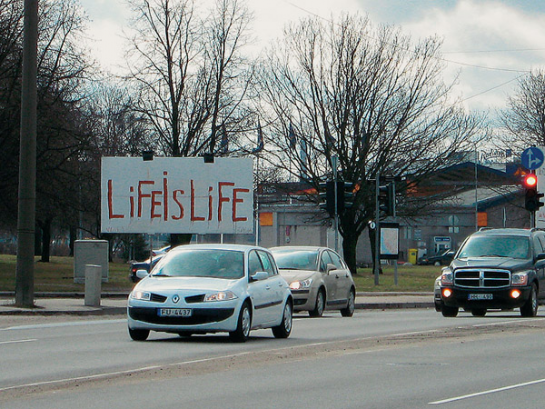
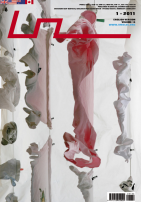















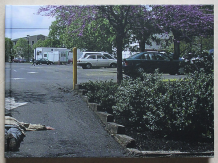




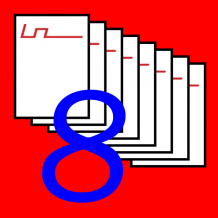

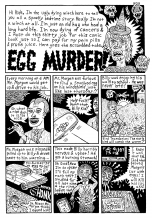
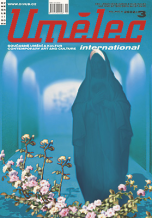


 New book by I.M.Jirous in English at our online bookshop.
New book by I.M.Jirous in English at our online bookshop.
Comments
There are currently no comments.Add new comment